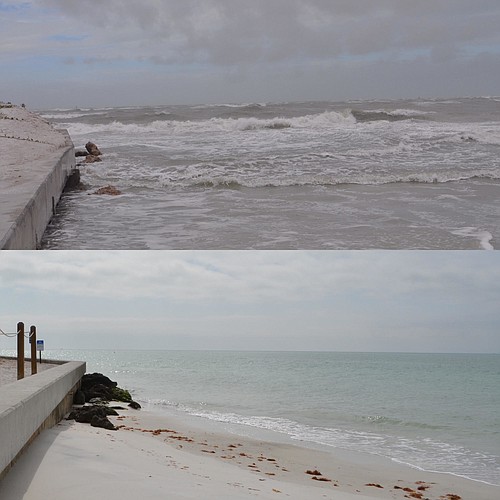- January 1, 2025
-
-
Loading

Loading

After six years of waiting and countless episodes of back and forth with documents, the town of Longboat Key last week received more than $6.6 million in reimbursement from both the federal and state governments for expenses related to Tropical Storm Debby in June 2012.
“Six years is a long time,” Town Manager Tom Harmer said.
Consider that when Debby struck in June 2012, President Barack Obama was gearing up for his re-election run. Apple's iPhone 5 would come out three months later. Gas averaged $3.61 a gallon.
The money - $5.68 million from the Federal Emergency Management Agency and $948,026 from the state – has been deposited into the town’s beach fund and will be used to offset future borrowing needed to begin work on planned groin projects, beach nourishment, or both, town officials said.
And that's not all of it. Town Manager Tom Harmer said the town expects approval soon of an additional $14,174.63 stemming from Debby.
With the federal and state reimbursements, the Longboat’s beach fund now stands at $9.9 million, which means town residents might get a break on their share of future beach projects.
Longboat residents have been paying for the upkeep of their beaches since 1992. That year, town leaders set up the Longboat Key Beach Erosion Control District A for all gulf side and non-residential properties and Longboat Key Beach Erosion District B for all bay-side residential properties. District A pays 80% and District B pays 20% of the costs.
The infusion of cash from the state and federal governments comes at a good time, too. The town is going through the permitting process necessary to move forward with the construction of five groins on the northern end of the island, a project now estimated to cost more than $13 million. Three groins are planned on the western shore of Greer Island, and two are planned farther to the south, near the Longbeach Condominiums, between North Shore Road and Broadway Street.
The town is also planning for a possible 2024 beach nourishment project, Harmer said. Most recently, the town spent $1.1 million last fall to place 1,400 dump trucks full of sand along a 600-foot stretch of beach along North Shore Road. The sand had to be trucked in from Polk County.
Tropical Storm Debby
The June 2012 storm blew away an estimated 150,000 cubic yards of sand from town beaches. It brought 10 inches of rain during a three-day period and flooded 51 streets in the town.
Debby also caused power outages and spread debris throughout the island. Homes, mostly on the north end of the island, were flooded, as were local golf courses. The storm took 950 turtle nests, a black skimmer colony of birds and perhaps what was then the world’s largest cotton plant at Casa
Del Mar.
Even more importantly, Debby took the last of the remaining sand from a $4 million nourishment project at the North End, the town’s chief hot spot. The shifting of sand around North Shore Road left a bigger Greer Island aka Beer Can Island.
“We had a huge amount of sand move around,” said Dave Bullock, who was Town Manager when Debby occurred.
Most of Debby’s damage was done in the northern and central portions of the state. It caused $250 million in damages and was responsible for nine deaths, seven of which were in Florida. The others were in South Carolina and Alabama.
FEMA money
Bullock is quick to credit Project Manager James Linkogle, who oversees the town’s beach management program, for staying on federal and state officials.
“James was relentless and never got discouraged,” said Bullock, who retired in January 2018. “Persistence and diligence. James is the man.”
Linkogle, for his part, said he was only doing his job.
“We are tenacious in keeping after the funds because our citizens have elected to fund their own beach, and under Presidential Declarations we are eligible as a community to receive reimbursement,” for restoration of beach damages , or loss of sand, he said.
Harmer said it is not unusual to wait years to be reimbursed from state and federal governments. But, he said the town expected to receive reimbursement. Town Commissioners were told during last year’s budget process that the town could receive $5 million from past storms.
“Unfortunately it is not usual for the reimbursement to take years until final payment has been received,” Harmer said. “There is a significant amount of documentation required and questions and verifications that happen during the process. Often times there are changes in personnel either at the state or federal government that can also impact the process.”
“The staff from both our Public Works Department and our Finance Department has been working on this request for over six years, and it is great to see all that work finally pay off.”